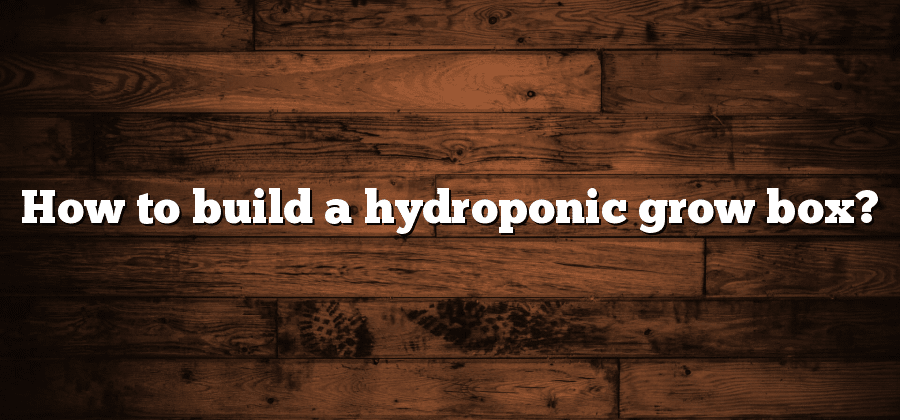Understanding the Basics of Hydroponic Systems
Hydroponics is a modern method of farming that eliminates the need for soil and instead relies on a nutrient-rich water solution to nourish plants. This technology allows for efficient and controlled growing conditions, making it a popular choice for both professional farmers and home gardeners. The basic principle behind hydroponic systems is to provide plants with the nutrients they need in a more direct and precise manner, resulting in faster growth and higher yields.
One of the key components of a hydroponic system is the nutrient solution. This solution contains all the essential elements that plants require for healthy growth, such as nitrogen, phosphorus, potassium, and a range of micronutrients. By supplying these nutrients directly to the roots, plants can absorb them more efficiently, leading to faster and healthier growth. Additionally, hydroponic systems allow for better control over the pH levels of the nutrient solution, ensuring optimal conditions for plant uptake. Overall, understanding the basics of hydroponic systems is crucial to achieving successful and sustainable growth in this innovative form of agriculture.
Selecting the Right Space for Your Hydroponic Grow Box
When it comes to selecting the right space for your hydroponic grow box, there are a few key factors to consider. First and foremost, you’ll want to ensure that your chosen space meets the basic requirements of your plants. This includes having access to sufficient light and ventilation, as well as a stable temperature and humidity level. Keep in mind that different plants may have different needs, so take the time to research and understand the specific requirements of the crops you plan to grow.
In addition to plant requirements, it’s important to consider practical considerations as well. Look for a space that is easily accessible and allows for easy maintenance of your hydroponic system. Make sure there is enough room for your grow box and any additional equipment or tools you may need. Consider the proximity to a water source and electrical outlets as well, as these will be essential for the functioning of your system. By taking these factors into account, you can ensure that you have selected the right space for your hydroponic grow box and set yourself up for success in your gardening endeavors.
Choosing the Best Grow Lights for Your Plants
When it comes to hydroponic gardening, selecting the best grow lights for your plants is a crucial decision. Grow lights play a vital role in providing the necessary light energy for photosynthesis to occur, ensuring healthy plant growth and development. There are several factors to consider when choosing the right grow lights for your hydroponic setup.
Firstly, it is important to determine the type of grow lights that best suit your plants’ needs. LED (Light Emitting Diode) lights, High-Pressure Sodium (HPS) lights, and Fluorescent lights are some common options. Each type has its advantages and disadvantages, such as energy efficiency, light spectrum, and heat generation. Additionally, considering the specific requirements of your plants, such as light intensity and duration, will help you make an informed decision. By carefully assessing these factors, you can ensure that your hydroponic garden receives the ideal lighting conditions for optimal plant growth.
Creating an Effective Watering System for Your Hydroponic Setup
Once you have set up your hydroponic system and chosen the appropriate growing medium for your plants, it is crucial to create an effective watering system to ensure their optimal growth. The watering system plays a vital role in delivering water and nutrients to the plants, mimicking their natural environment and promoting healthy root development.
One important factor to consider in creating an effective watering system is the type of irrigation method to use. There are several options available, including drip irrigation, flood and drain systems, and aeroponics. Drip irrigation is commonly used in hydroponic setups as it delivers water directly to the roots, minimizing water waste and nutrient runoff. Flood and drain systems, on the other hand, flood the growing medium with nutrient-rich water before draining it away, promoting oxygenation of the roots. Aeroponics is a more advanced method that involves spraying nutrient solution directly onto the plant roots suspended in air. Whichever method you choose, it is important to ensure that the watering system is well-designed and properly maintained to provide the plants with the necessary water and nutrients they need for optimal growth.
Selecting the Appropriate Growing Medium for Your Plants
When it comes to hydroponic systems, selecting the appropriate growing medium for your plants is a crucial decision. The growing medium serves as a support system for the plants’ roots, allowing them to anchor and absorb nutrients efficiently. There are various types of growing mediums available, each with its own advantages and disadvantages.
One common growing medium used in hydroponics is rockwool. Made from heated basalt rock and chalk, rockwool provides excellent water retention and aeration properties. It is pH-neutral and does not compact easily, ensuring good root growth and preventing root diseases. Another popular choice is perlite, a lightweight material that promotes drainage and allows for good air circulation. Its porous nature also helps to prevent overwatering and root rot. However, it is important to note that perlite does not retain moisture well, so regular watering is essential. Additionally, coconut coir, a byproduct of coconut husks, is gaining popularity due to its sustainability and ability to retain water while maintaining good aeration. It is pH-neutral and typically comes in compacted blocks or bags, making it easy to handle and use.
When selecting the appropriate growing medium for your hydroponic setup, it is essential to consider the specific needs of your plants and the type of system you are using. Each growing medium has its unique characteristics and suitability for different plant varieties and growth stages. By understanding these factors and choosing the right growing medium, you can ensure optimal plant growth and a thriving hydroponic system.






